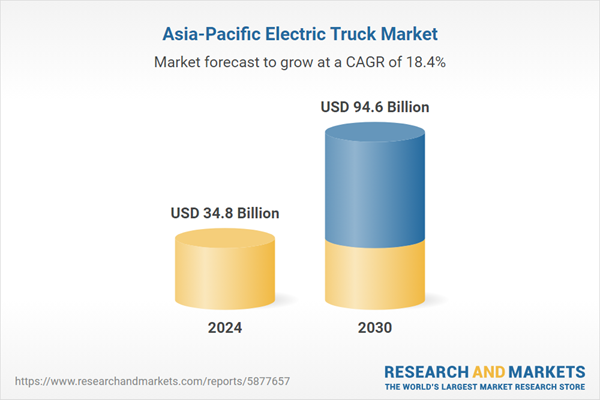Speak directly to the analyst to clarify any post sales queries you may have.
10% Free customizationThis report comes with 10% free customization, enabling you to add data that meets your specific business needs.
Market Drivers
Government Incentives and Regulations
Governments worldwide are setting stringent emission regulations, encouraging the adoption of electric trucks to reduce environmental pollution. Various subsidies, tax rebates, and grants are being offered to manufacturers and fleet operators to transition from fossil fuel-powered vehicles to electric alternatives. These regulatory incentives play a pivotal role in making electric trucks more economically viable.Such policies lower the upfront cost barriers for businesses switching to electric fleets. Regulatory frameworks often include low-emission zones and vehicle mandates, compelling operators to upgrade. This alignment between policy and sustainability goals is accelerating industry-wide transformation. For instance, Launched on October 1, 2024, the PM E-DRIVE Scheme by India’s Ministry of Heavy Industry consolidates and expands EV support through March 31, 2026, subsuming the earlier EMPS-2024.
With a total budget of approximately USD 1.31 billion (INR 10,900 crore), the scheme aims to support over 2.88 million vehicles, including 2.47 million electric two-wheelers, 110,596 e-rickshaws and e-carts, 205,392 L5 electric three-wheelers, and 14,028 e-buses. Additional allocations are set aside for e-ambulances, e-trucks, public charging stations (72,300 units), and the upgradation of testing agencies. Incentives are limited to EVs equipped with advanced batteries and are mainly targeted at commercially registered e-2Ws and e-3Ws, though privately owned e-2Ws are also eligible.
Key Market Challenges
High Initial Purchase Costs
The high upfront costs of electric trucks remain one of the most significant barriers to widespread adoption. While electric trucks can save money on fuel and maintenance in the long run, the initial price is considerably higher than that of conventional trucks. This makes it difficult for small and medium-sized businesses, who may already operate on tight margins, to afford the switch to electric vehicles. Financing and government incentives help alleviate some of this cost, but high purchase prices still pose a challenge to mass market adoption.Key Market Trends
Integration of Renewable Energy Sources
AAs the world moves towards more sustainable energy solutions, integrating renewable energy sources, such as solar or wind, to charge electric trucks is becoming a notable trend. Companies are increasingly exploring ways to power electric trucks with clean energy, reducing the carbon footprint of their transportation fleets even further. This integration of renewable energy sources aligns with the global push for greener and more sustainable energy use. As solar and wind power become more affordable and widespread, the future of electric truck operations will likely be closely tied to clean energy innovations.Businesses are also installing on-site solar panels and battery storage systems to gain energy independence and stabilize charging costs. These renewable-powered charging systems contribute to grid resilience and reduce dependency on fossil fuel-derived electricity. The synergy between growing clean energy capacities in the region and electric transportation enhances brand image and supports long-term sustainability goals.
For instance, India's renewable energy capacity reached a historic 220.10 GW by the end of FY 2024-25, with a record annual addition of 29.52 GW - driven primarily by 23.83 GW from solar energy, pushing total solar capacity to 105.65 GW. Wind power also crossed the 50 GW milestone with 4.15 GW added, while bioenergy and small hydro reached 11.58 GW and 5.10 GW, respectively. With 169.40 GW under implementation and 65.06 GW already tendered, including hybrid and RTC projects, India is advancing steadily toward its 2030 target of 500 GW non-fossil capacity under the ‘Panchamrit’ goals.
Key Market Players
- Tesla, Inc.
- BYD Company Ltd.
- Volvo Group
- Rivian Automotive, Inc.
- MAN Truck & Bus SE
- Nikola Corporation
- Scania AB
- Fuso Truck and Bus Corporation (Mitsubishi Fuso)
- Lordstown Motors Corp.
- Isuzu Motors Ltd.
Report Scope:
In this report, the Asia-Pacific Electric Truck Market has been segmented into the following categories, in addition to the industry trends which have also been detailed below:Asia-Pacific Electric Truck Market, By Vehicle Type:
- Light Duty Truck
- Medium Duty Truck
- Heavy Duty Truck
Asia-Pacific Electric Truck Market, By Application:
- Wholesale & Retail
- Mining
- Construction
- Others
Asia-Pacific Electric Truck Market, By Fuel Type:
- BEV
- HEV
- PHEV
- FCEV
Asia-Pacific Electric Truck Market, By Country:
- China
- India
- Japan
- Vietnam
- Indonesia
- Australia
- Rest Of Asia Pacific
Competitive Landscape
Company Profiles: Detailed analysis of the major companies present in the Asia-Pacific Electric Truck Market.Available Customizations:
Asia-Pacific Electric Truck Market report with the given market data, TechSci Research, offers customizations according to the company’s specific needs. The following customization options are available for the report.Company Information
- Detailed analysis and profiling of additional market players (up to five).
Table of Contents
Companies Mentioned
- Tesla, Inc.
- BYD Company Ltd.
- Volvo Group
- Rivian Automotive, Inc.
- MAN Truck & Bus SE
- Nikola Corporation
- Scania AB
- Fuso Truck and Bus Corporation (Mitsubishi Fuso)
- Lordstown Motors Corp.
- Isuzu Motors Ltd.
Table Information
| Report Attribute | Details |
|---|---|
| No. of Pages | 138 |
| Published | August 2025 |
| Forecast Period | 2024 - 2030 |
| Estimated Market Value ( USD | $ 34.8 Billion |
| Forecasted Market Value ( USD | $ 94.6 Billion |
| Compound Annual Growth Rate | 18.4% |
| Regions Covered | Asia Pacific |
| No. of Companies Mentioned | 10 |









